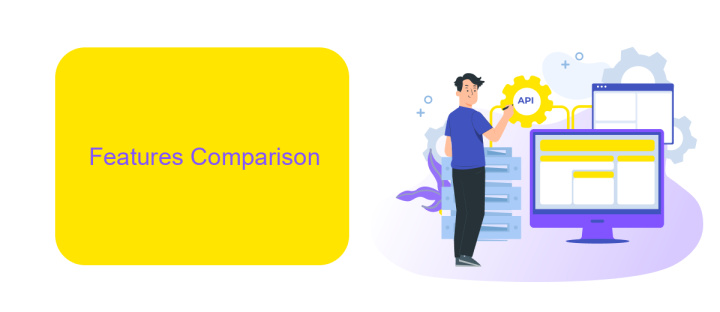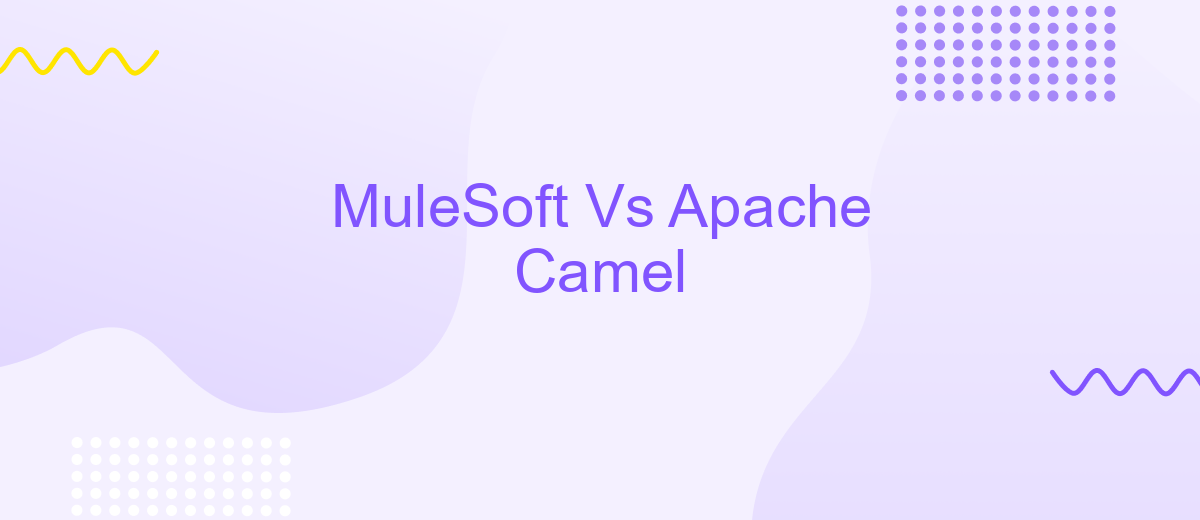MuleSoft Vs Apache Camel
In the realm of enterprise integration, choosing the right tool can significantly impact your project's success. MuleSoft and Apache Camel are two leading integration platforms, each with its unique strengths and use cases. This article delves into a comparative analysis of MuleSoft and Apache Camel, exploring their features, performance, and suitability for various business needs.
Introduction
In the modern landscape of enterprise integration, choosing the right tool to streamline processes and ensure seamless data flow is crucial. Two prominent players in this domain are MuleSoft and Apache Camel. Both offer robust solutions for connecting applications, data, and devices, but they cater to different needs and use cases.
- MuleSoft provides a comprehensive integration platform that includes a variety of tools for API management, data integration, and analytics.
- Apache Camel is an open-source integration framework that focuses on routing and mediation rules, offering flexibility and a wide range of connectors.
- ApiX-Drive is another service worth mentioning, as it simplifies the process of setting up integrations without requiring deep technical expertise, making it a valuable alternative for businesses looking for quick and efficient solutions.
Understanding the strengths and limitations of each platform is essential for making an informed decision. Whether you prioritize ease of use, flexibility, or a comprehensive suite of tools, evaluating MuleSoft, Apache Camel, and even ApiX-Drive can guide you toward the best integration solution for your organization.
Features Comparison

MuleSoft and Apache Camel are powerful integration platforms, each offering distinct features. MuleSoft provides a comprehensive suite with its Anypoint Platform, offering design, deployment, and management tools in a unified environment. It boasts a user-friendly interface, making it accessible for users with varying technical skills. MuleSoft supports a wide range of connectors and pre-built templates, which simplify the integration process. Additionally, its strong API management capabilities ensure seamless communication between different systems.
On the other hand, Apache Camel is an open-source integration framework known for its flexibility and extensive component library. It excels in routing and mediation rules using domain-specific languages (DSLs), which offer developers granular control over integrations. Camel's lightweight nature makes it ideal for microservices architectures. While it may require more technical expertise compared to MuleSoft, its integration capabilities are robust and highly customizable. For businesses seeking an easy-to-use integration service, ApiX-Drive can be a valuable addition, providing automated workflows and seamless data transfer between various applications without extensive coding.
Use Cases and Integrations

MuleSoft and Apache Camel are popular integration frameworks used to connect various applications and systems. Each has its unique strengths and use cases, making them suitable for different scenarios.
- Enterprise Application Integration (EAI): MuleSoft excels in EAI due to its robust connectors and pre-built templates that simplify the integration process.
- Microservices Architecture: Apache Camel is ideal for microservices due to its lightweight nature and flexibility in routing and mediation.
- Cloud Integration: MuleSoft provides comprehensive cloud integration capabilities, making it a preferred choice for businesses transitioning to the cloud.
- Data Transformation: Both MuleSoft and Apache Camel offer strong data transformation features, but MuleSoft's DataWeave language provides an edge in complex transformations.
- API Management: MuleSoft’s Anypoint Platform offers extensive API management capabilities, making it suitable for businesses with a strong focus on API-led connectivity.
For seamless integration setup, services like ApiX-Drive can be invaluable. ApiX-Drive enables easy automation and integration between various applications, reducing the complexity of manual configurations. Whether you choose MuleSoft or Apache Camel, leveraging such services can enhance your integration strategy and streamline operations.
Advantages and Disadvantages

MuleSoft and Apache Camel are two prominent integration platforms, each with its own set of strengths and weaknesses. MuleSoft, known for its user-friendly interface and extensive out-of-the-box connectors, is often praised for its ease of use and robust support. Apache Camel, on the other hand, is recognized for its lightweight nature and flexibility, making it a popular choice for developers who prefer a more hands-on approach.
One of the key advantages of MuleSoft is its comprehensive documentation and strong community support, which can significantly reduce the learning curve for new users. Conversely, Apache Camel's primary strength lies in its simplicity and the ability to integrate seamlessly with Java applications, providing a more customizable experience.
- MuleSoft: User-friendly interface, extensive connectors, strong support.
- Apache Camel: Lightweight, flexible, integrates well with Java.
While both platforms have their merits, the choice between MuleSoft and Apache Camel often comes down to specific project requirements and the expertise of the development team. For those looking to simplify the integration process further, services like ApiX-Drive can offer additional automation and ease of use, making the integration process more efficient and less time-consuming.
Conclusion
In conclusion, both MuleSoft and Apache Camel offer robust solutions for integration needs, each with its own strengths and weaknesses. MuleSoft provides a comprehensive, enterprise-grade platform that includes extensive support, a wide range of connectors, and a user-friendly interface. Its capabilities make it an excellent choice for large organizations looking for a scalable and reliable integration solution. On the other hand, Apache Camel is a flexible, open-source framework that excels in customizability and lightweight deployments. Its strong support for enterprise integration patterns and extensive documentation make it a preferred choice for developers who need fine-grained control over their integration processes.
Ultimately, the choice between MuleSoft and Apache Camel will depend on the specific requirements and constraints of your organization. For those looking for a middle ground, services like ApiX-Drive can offer a streamlined approach to integration, providing an easy-to-use platform that bridges the gap between complex enterprise solutions and customizable frameworks. By evaluating your needs and leveraging the strengths of these platforms, you can achieve a seamless and efficient integration strategy tailored to your business objectives.
FAQ
What are the primary differences between MuleSoft and Apache Camel?
Which solution is better for a large enterprise with complex integration needs?
Can I use MuleSoft and Apache Camel together in a hybrid integration approach?
What are the costs associated with using MuleSoft and Apache Camel?
Are there services available to help with implementing MuleSoft or Apache Camel integrations?
Strive to take your business to the next level, achieve your goals faster and more efficiently? Apix-Drive is your reliable assistant for these tasks. An online service and application connector will help you automate key business processes and get rid of the routine. You and your employees will free up time for important core tasks. Try Apix-Drive features for free to see the effectiveness of the online connector for yourself.

